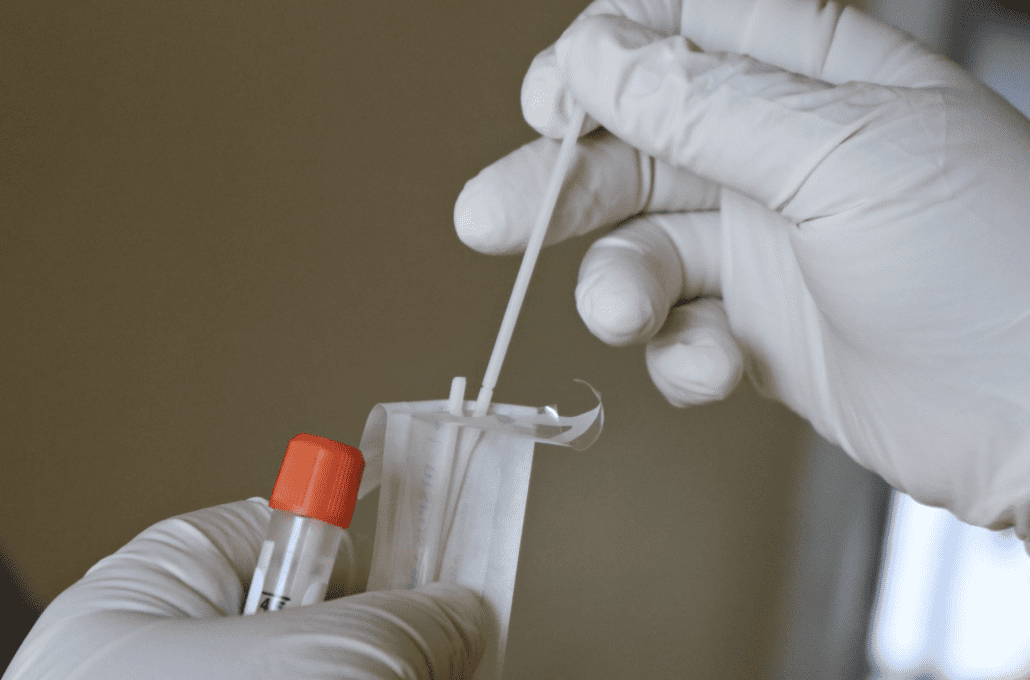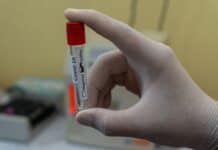 COVID testing is increasingly becoming the risk mitigation tool of choice for meeting and event planners, overtaking the previously well-established proof-of-vaccination as a way to ensure attendee health and safety as the COVID pandemic continues to morph and grind on.
COVID testing is increasingly becoming the risk mitigation tool of choice for meeting and event planners, overtaking the previously well-established proof-of-vaccination as a way to ensure attendee health and safety as the COVID pandemic continues to morph and grind on.
COVID testing is becoming the preferred pandemic-related health and safety protocol for meetings and events, overtaking once-popular measures such as temperature-taking, daily symptom tracking, and even vaccination status verification, once the gold standard.

“We haven’t had a client who wanted to implement daily symptom tracking as a COVID mitigation process in the past six months,” says Amanda Schleede, Founder and CEO of Attend Safe, which provides health and safety measures including vaccine and test verifications, contact tracing technology, and at-home and on-site tests and COVID testing services for event organizers. “With the Omicron variant, you can be fully vaccinated and still get Omicron. You could be asymptomatic and not know you’re COVID positive, even if you are fully vaccinated and boosted.”
“What everyone wants across the board now is COVID testing,” Schleede adds. “And for those who don’t already ask for it, I recommend that they test, test, test. Regardless of vaccination status, have everyone test ideally 24 hours before they leave for the event, or at least when they check in at the hotel or pick up their badges on site.” Attend Safe can send the highest rated home test kit to attendees, who can submit their results to the web-based app to get the green light to attend.
“I won’t say it’s cheap, but it is an inexpensive way of ensuring your attendees are COVID-free upon arrival.”
Schleede also recommends that, for longer duration meetings, planners mandate that everyone at the event be tested 48 hours into the meeting to detect those whose viral load may not yet have been high enough to test positive pre-event or when they first arrived. It also is a good idea to have on-site testing available throughout the event so anyone who starts to feel ill can easily get a test without having to seek out a local testing site. Having on-site testing available also can be a big boon for events with a large number of international attendees who may have to show a negative result to get on the plane back home, she says.
She adds that some event organizers are providing home test kits to all departing attendees. “Think of it almost as a thank-you or departure gift,” she says. “It provides a level of comfort and lowers anxiety, especially for attendees who are going home to unvaccinated children or spouses.” Some event organizers ask that attendees report any positive results afterward so they can track the likely infection rate from their event.
Other pandemic-related considerations event planners should still have on their radar screens, according to Schleede:
- Know what is available at your meeting destination for those who test positive while at the event. “Some hotels are not delivering room service, or even allowing any food delivery to guest rooms. Some hotels are not allowing anyone who is COVID positive to stay at their hotels at all.” This means locating a COVID hotel, or at least ensuring that the person has everything they need to safely stay in their room for the next five days.
- Consider your mask mandate options. Masking also has become optional for a lot of event organizers now that no states currently require face coverings to be worn other than in certain high-risk settings such as hospitals and long-term care facilities. Most cities and counties also have dropped their masking requirements, as have most airlines and other forms of mass transport, even as the Centers for Disease Control and Prevention (CDC) continues to recommend that people wear masks indoors and in confined spaces in areas deemed to be at high-risk — which is the case in nearly 10% of U.S. counties at the moment.
Masking requirements “really depend on the venue, on the state, and on the host organization,” Schleede says. “Privately held organizations can mandate whatever they want, even if the meeting is in a state with no masking mandate, though you may not be able to mandate that the hotel staff wear masks in those cases.” Many event organizer clients work with Schleede’s company to determine the percentage of positive cases that would be threshold over which they would institute a mask mandate. “What we’re finding is that most say they will go to full mandatory masking at a 10% positivity rate. At 20%, they shut down the event.”
With our collective attention now shifting to mass school shootings, the war in Ukraine, and everything else going on in the world right now, the temptation is to put COVID on the back burner, acknowledges Schleede. “I don’t want to be a negative Nancy, but as is the case with so many other risk factors in event planning, let’s plan for the worst-case scenario, and hope for the best.”
Here’s a handy infographic outlining the latest COVID stats, courtesy of Attend Safe: COVID-19 NEWS_Infographic_V2_Connected
You May Also Be Interested In…
COVID Expert on Our New Reality
How to Make Events Safe in the Omicron Era: We Asked An Expert
New Study Reveals Changing Meetings Landscape










